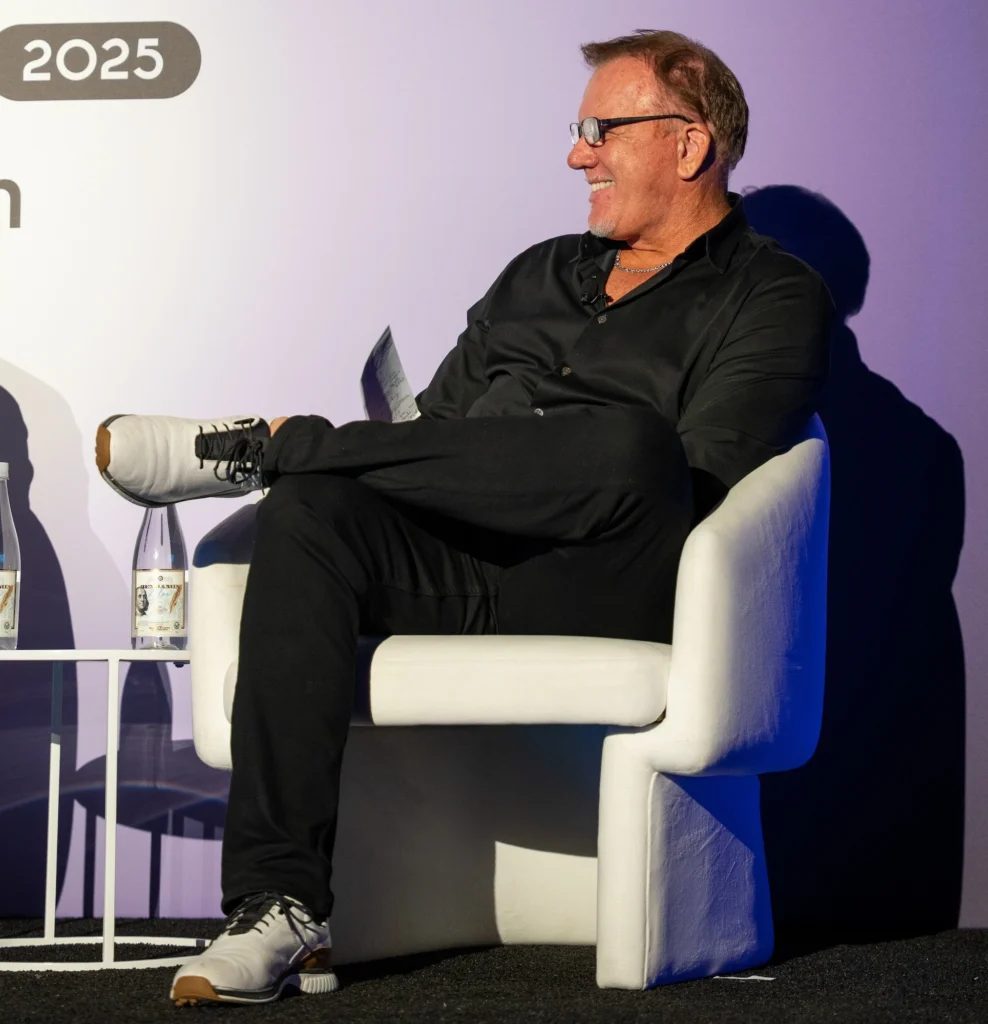
At the ATN Innovation Summit, top operators shared the real-world challenges behind scaling, acquiring and exiting fitness businesses
In the fitness industry, M&A isn’t for the faint of heart. But there’s serious money to be made if you do things the right way.
That was the message from three industry heavyweights at the ATN Innovation Summit 2025 in a session titled “M&A in the HALO Sector: Deals, Diligence & the Dirty Details.” Pete Moore, managing partner at Integrity Square, moderated the discussion, which featured Mark Federico, CEO of Fitness Holdings North America, a leading Crunch franchisee, and Terry Blachek, CEO of Austin Fitness Group, a top franchisee in the Orangetheory system. The discussion peeled back the layers of deal-making in the fitness industry, touching on everything from lease assignments and landlord friction to unit economics.
The panel opened with Moore offering context for the sector’s shifting dynamics, including the segmentation of the fitness and wellness industry (or as he would call it, the “HALO” – Health, Active Lifestyle and Outdoors – industry) that’s happened over the last 20 or so years.
“Every one of these segments has their own valuations, has their own potential, opportunities, risks, capital expenditures and franchisors and franchisees,” he said.
Moore pointed to how valuations have changed over time, with Crunch corporate trading at over 18x EBITDA and area developers seeing multiples in the 9–11x range.
“If you have a diversity of clubs and diversity of states, you really get a high valuation,” he added.
Build or Buy?
Federico and his team have completed nearly 20 acquisitions out of the 52 clubs in their portfolio, but not all have gone smoothly. One club stood out: a $3–4 million Crunch buildout acquired for just $500,000.
“Everything was new. And I was like, ‘Oh, we’ll be able to get a home run,” he said. “Year one of our ownership, we lost $200,000. Year two, we lost $100,000. Finally, we just closed the club down.”
His big takeaway was about overconfidence: “Don’t let ego get in the way. Really look at the numbers.”
Federico also urged operators to focus on lease terms early.
“Make sure that your lease assignment clause allows you to assign it to any affiliate of the brand that you are currently under without consent,” he said. “Deals fall apart if they take too long. And one of the things they fall apart on is because landlords start to take their time.”

Don’t Scale Too Soon
Blachek, a key figure in the creation of Orangetheory corporate in addition to being one of the brand’s top franchisees, shared how OTF grew from a concept into a nationwide franchise.
“In order to do that, I had to liquidate all of my 401(k), all of my investments,” he said. “It wasn’t a lot of money at the time. It was about $473,000 to be exact.”
To open his first three studios, he signed personal guarantees on the leases and equipment until private equity came in. That risk, he explained, paid off with time.
“Three locations at $350,000 to $400,000 made me about a million dollars a year,” Blachek recalled, although he stressed the need to master operations before considering expansion.
“Nail it before you scale it,” he said. “I nailed my own studios. I set the records for pre-sales, for number of members.”

Blachek also reminded franchisees who take on multi-unit development agreements to take their time before opening location number two.
“This club will pay for the next club. Get that club to a profitable size before you go on and take on the next one,” he advised. “I’ve seen a lot of groups kind of take on more than they can chew just trying to grow too quickly.”
Know Your Leverage – and Be Ready To Work Hard
As the session closed, Blachek addressed the desire many operators have to attract private equity, and the importance of knowing their leverage.
“Don’t be so committed to what you want that you’re not willing to take something better,” he said. “The person that controls the conversation, the person that controls the relationship, is typically the one that has a little bit less interest, and the willingness to walk away. It’s incredibly powerful.”
Blachek also described the pressure to grow quickly once private equity joined the mix.
“We had 18 locations when I sold to private equity. Within a year, we were up to 60. We tripled our size in 12 months,” he said.
However, the rapid scaling was not without downsides.
“All of a sudden, what happens is you start to lose the culture,” Blachek noted. “As a small group, I can be an autocrat. But as a big group, I can’t be everywhere. You can’t microwave good people. You have to crockpot them.”
Everyone agreed that success in fitness M&A isn’t about a fast exit or perfect timing; it’s about doing the hard, unglamorous work.
“None of that happens by chance,” Blachek said. “It happened with a lot of stress, a lot of hardship, a lot of losses and a lot of lessons.”
This article is based on a live discussion held during the ATN Innovation Summit 2025, a two-day event dedicated to the future of fitness and wellness. See here for more Innovation Summit coverage.
